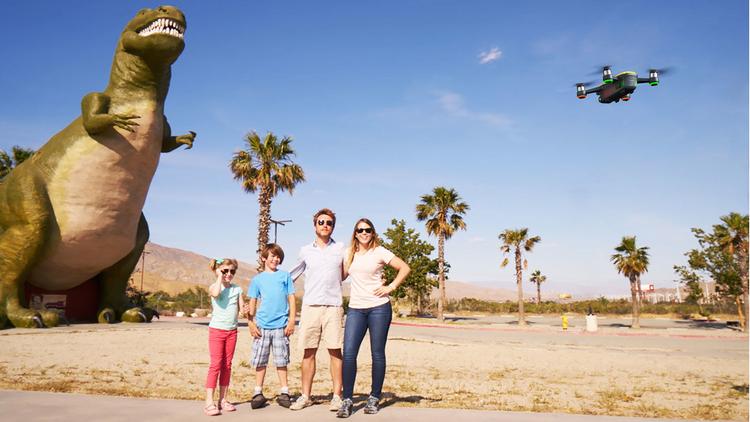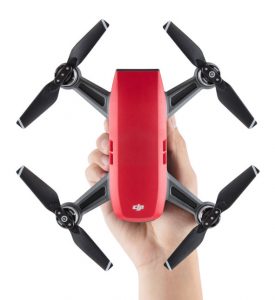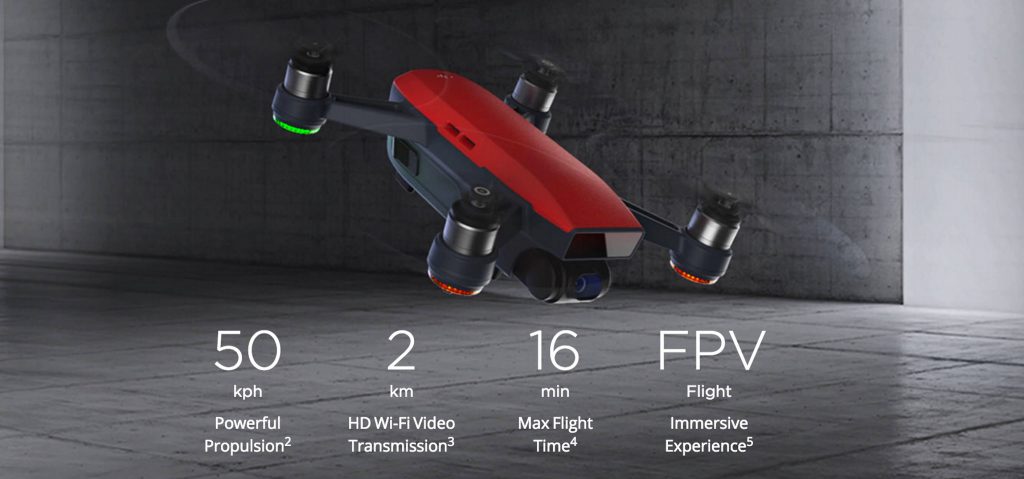
DJI has been making drones less expensive and more powerful at a remarkable rate. But even with its latest foldable drone — the Mavic Pro — the units require a serious commitment of time and money. Even just flying them starts with a pre-flight checklist. That’s kept the drone confined to businesses and serious hobbyists, and prevented them from being the sort of immediate experience sharing device that a smartphone camera is. With its new Spark “personal drone,” DJI is hoping to change that.

The Spark is tiny for a full-featured drone, about the same size and weight as a soda can. DJI is hoping that means you’ll take it with you everywhere, ready to share your experiences and tell your stories at a moment’s notice. According to DJI, 46 percent of Americans say they want to purchase a drone this year, but aren’t quite sure why. That number sounds high to me, but whatever the number, the Spark will certainly make it more likely that they do.
The DJI Spark is all about immediacy and storytelling
You launch the Spark by simply turning it on and letting it see you. Then the real magic starts. You can control the Spark entirely with gestures — not even a smartphone is required. DJI Spark Lava Red – Handheld
Gestures aren’t new to DJI. It uses them in “selfie” modes on higher-end drones, but that has always been more of a gimmick for serious drone photographers. With the Spark, you can wave the drone further away, use your palm to signal it to change location, and take an image by using the same framing motion you can with DJI’s other models. Landing is also simple: Stick out your palm and the Spark will land on it.

The Spark isn’t just a selfie drone
Once you want to move beyond using your hand to control the drone for selfies, you can fly it using your smartphone via Wi-Fi, or with the optional remote controller at up to 1.2 miles. This is made possible because the Spark has most of the flight features of its biggest siblings, including obstacle avoidance, GPS and Glonass along with visual location finding, and Return To Home (RTH).
Here is where I think things will get tricky. It’s one thing to wave a drone around and let it land on your hand, but another to fly it with your phone while navigating all the options and icons of DJI’s Go application. Go is an excellent and powerful app for flying drones, but can be fairly intimidating until you take some time to learn it.

The Spark’s QuickShot cinematic modes help you tell stories
Clearly DJI wants to increase the appeal of its drones to entire families perhaps replacing the role played by traditional point and shoot cameras for decadesIt’s difficult to fly a drone smoothly enough by hand to mimic the smooth pans and other effects we’re used to seeing in professional videos. So software that does it automatically is important. DJI is building some of that into the Spark with QuickShot.
To get started, you tap on your subject in the preview screen, and your Spark flies an automated path for a minute and generates a 10-second clip for immediate sharing. Spark supports four QuickShot modes: Rocket, Droning, Circle, and Helix. Of those, Helix may be the coolest. It replicates a helicopter action shot by slowly drawing away from the subject in a spiral.
You can now also have DJI Go 4 create a highlight reel of segments from your favorite clips, ready for instant sharing. DJI envisions you being able to pull out your drone, capture your favorite moments, and then with a few clicks create something you can email or share on your favorite social network.
Spark’s camera and flight modes are impressive for its size
Spark features a 1/2.3-inch sensor, a tiny bit larger than the one in most smartphones, that can record 12MP stills or 1080p (30fps) video. It has a 2-dimensional mechanical gimbal and electronic stabilization. Spark also has many of DJI’s intelligent flight modes, including ActiveTrack and TapFly. New modes include Pano (until now, automatic panorama required third-party software like Litchi) and ShallowFocus. Spark will also support DJI Goggles, when they are available.
The Spark can achieve speeds up to 31 mph in Sport mode with the optional controller, can be recharged via micro USB, and has a flight time of up to 16 minutes — about half that of the Mavic Pro.
Price and availability
You can pre-order DJI’s Spark starting today for $499 (Amazon), and will be shipping in June. A bundle with accessories including the remote controller is $699.
Offical DJI Spark – Intro Video
 iTechBahrain Information Technology Digital Marketing Web & Mobile Development Services
iTechBahrain Information Technology Digital Marketing Web & Mobile Development Services


